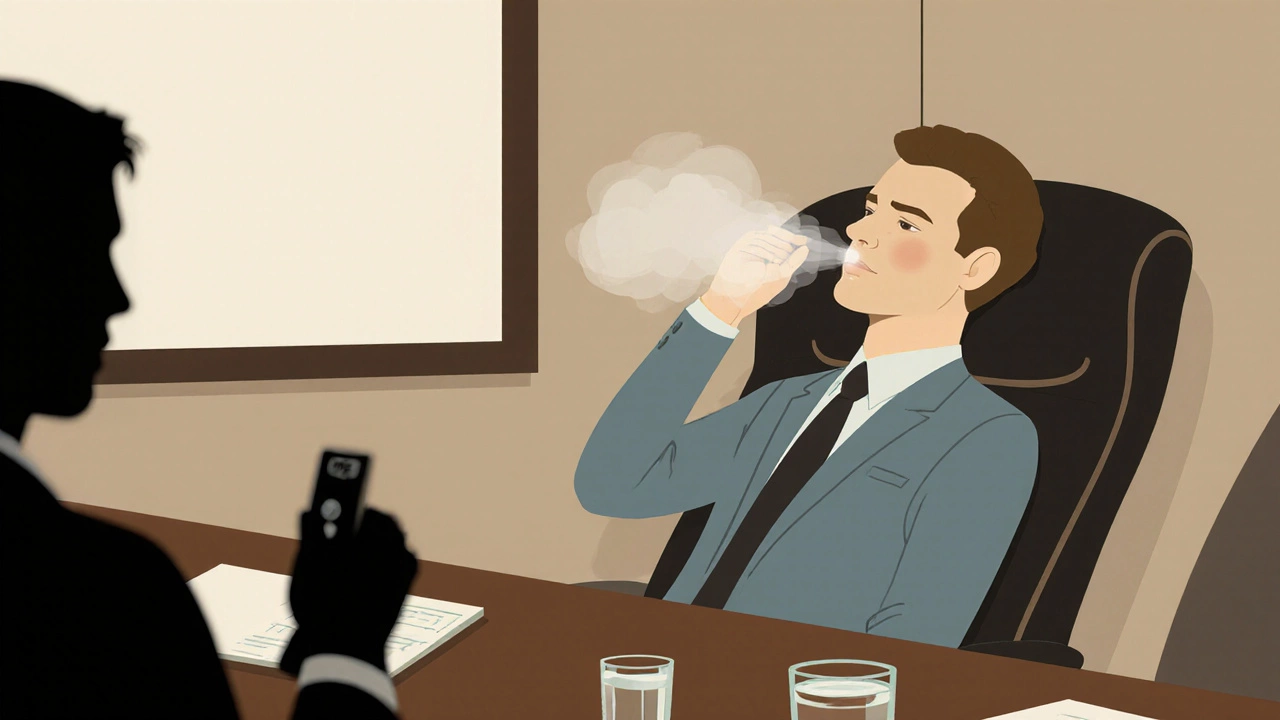In a world where deadlines are relentless and expectations high, the modern gentleman must master the art of staying calm without letting the fire burn out his spirit. Below is a practical roadmap that blends timeless habits with contemporary science, helping you navigate daily pressures while preserving your mental edge.
Key Takeaways
- Identify personal stress triggers and address them before they accumulate.
- Blend quick‑relief tactics (breathing, micro‑breaks) with long‑term pillars (sleep, exercise, mindfulness).
- Use structured time‑management to protect focus and prevent overload.
- Adopt a "maintenance" mindset: regular small actions stave off the crescendo that leads to burnout.
Understanding the Landscape
Stress Management is a discipline focused on recognizing, reducing, and coping with stressors that arise in everyday life. It differs from occasional stress in that it seeks sustainable equilibrium rather than a one‑off fix.
When the balance tips, the result is Burnout - a state of emotional, physical, and mental exhaustion caused by prolonged exposure to stressors. Burnout isn’t a badge of honor; it signals that the coping mechanisms have been stretched beyond their capacity.
1. Diagnose Your Stress Profile
Start with a brief audit. Over the next week, note moments when you feel tension rise. Ask yourself:
- What triggered the sensation?
- How intense was it on a scale of 1‑10?
- Did I have a tool ready to address it?
Patterns emerge quickly. For many professionals, the leading culprits are:
- Unclear expectations from supervisors.
- Information overload - especially from digital devices.
- Insufficient recovery time between tasks.
Recognising these triggers unlocks the ability to intervene early.
2. Quick‑Relief Arsenal
When a spike occurs, you need a rapid response that doesn’t disrupt your flow. The following techniques can be executed in under a minute.
| Technique | Duration | Primary Benefit |
|---|---|---|
| Box Breathing | 30 s | Instant calm via autonomic regulation |
| Desk Stretch | 45 s | Releases muscular tension, improves circulation |
| Visual Reset (5‑second horizon scan) | 5 s | Reduces visual fatigue, resets focus |
| Mindful Sip of Water | 15 s | Hydration cue, grounds attention |
These actions are discreet enough to perform in a boardroom or co‑working space without drawing attention.

3. Building Long‑Term Resilience
Quick fixes keep the momentary tide at bay, but lasting protection comes from a handful of lifestyle pillars.
Physical Exercise
Physical Exercise acts as a physiological antidote to stress, lowering cortisol and boosting endorphins. Aim for three sessions per week, mixing cardiovascular work (e.g., brisk walking or rowing) with strength training. Even a 20‑minute routine can elevate mood for up to 24 hours.
Sleep Hygiene
Sleep Hygiene encompasses practices that promote uninterrupted, restorative sleep. Ensure a dark, cool bedroom, limit blue‑light exposure after 9 p.m., and keep a consistent bedtime. Seven to eight hours of quality sleep restores cognitive bandwidth, making daily stress feel more manageable.
Mindfulness & Meditation
Mindfulness is the practice of observing thoughts and sensations without judgment, cultivating mental clarity. A daily 10‑minute seated meditation can rewire the brain’s stress response, as shown in numerous peer‑reviewed studies.
Nutrition
Balanced meals stabilize blood‑sugar, preventing the irritability that mimics stress. Prioritise whole grains, lean protein, and omega‑3 rich foods such as salmon or walnuts. Limit caffeine after midday to avoid sleep disruption.
Digital Detox
Constant notifications fragment attention. Designate “screen‑free” windows-perhaps during dinner or the first hour after waking-and keep work devices out of the bedroom.
4. Time Management as a Stress Buffer
Effective scheduling shields you from the overload that breeds burnout. Two strategies are particularly suited to a gentleman’s routine.
The Pomodoro‑Enhanced Day
Break work into 90‑minute blocks (aligned with natural ultradian rhythms) followed by a 15‑minute pause. During the pause, employ one of the quick‑relief techniques above. This cadence respects focus peaks while enforcing regular recovery.
Weekly Review & Prioritisation
Each Sunday evening, review upcoming commitments. Categorise tasks using the Eisenhower Matrix:
- Urgent & Important: Do today.
- Important but Not Urgent: Schedule.
- Urgent but Not Important: Delegate if possible.
- Neither: Drop.
This visual filter prevents the “always‑on” mindset that fuels burnout.
5. Cognitive Reframing Techniques
Stress often stems from perception rather than reality. Cognitive Reframing involves deliberately shifting the narrative you tell yourself about a stressor. For example, replace “I’m behind on this project” with “I have a clear next step that will move the project forward”. This subtle change reduces anxiety and restores agency.

6. Crafting a Personal Stress‑Management Blueprint
Take the elements above and tailor a daily plan that feels natural.
- Morning: 10‑minute mindfulness, followed by a brief stretch.
- Mid‑morning: First 90‑minute work block, then box breathing.
- Lunch: Walk outside, hydrate, digital‑free.
- Afternoon: Second 90‑minute block, then a desk stretch.
- Evening: Light dinner, screen‑free zone, short reading (non‑work).
- Night: Sleep hygiene routine - dim lights, cool room, consistent bedtime.
Adjust timings to fit your commitments, but maintain the rhythm of focused effort followed by intentional recovery.
7. Signs You’re veering Toward Burnout (and How to Act)
Even with a solid plan, complacency can set in. Watch for these early warnings:
- Persistent fatigue despite adequate sleep.
- Increasing cynicism toward work or colleagues.
- Reduced performance on tasks you previously handled effortlessly.
If two or more appear, execute a “reset”:
- Schedule a full day off - no work, no screens.
- Engage in a restorative activity you enjoy (e.g., sailing, classic literature).
- Reflect on workload; delegate or postpone non‑essential items.
Seeing a professional coach or therapist is also a prudent step for long‑term resilience.
Conclusion
Managing daily stress without burning out is less about heroic willpower and more about disciplined maintenance. By identifying triggers, employing quick‑relief tools, cementing lifestyle pillars, and protecting your time, you cultivate a calm that endures through the busiest of days. The modern gentleman understands that true confidence springs from inner steadiness, not the absence of pressure.
What is the difference between stress and burnout?
Stress is a short‑term response to a demand, while burnout is a chronic state of exhaustion that develops when stress remains unaddressed over time.
How often should I practice mindfulness?
A daily 10‑minute session is sufficient for most men, but consistency matters more than duration.
Can short breaks really improve productivity?
Yes. Brief, structured breaks reset the nervous system, allowing sharper focus during subsequent work periods.
What role does nutrition play in stress management?
Balanced meals prevent blood‑sugar spikes that can mimic stress symptoms, while omega‑3 fatty acids support brain health.
How can I create a digital‑free evening without feeling disconnected?
Replace screen time with tactile activities - reading a classic novel, polishing leather shoes, or preparing a simple, healthy meal.

